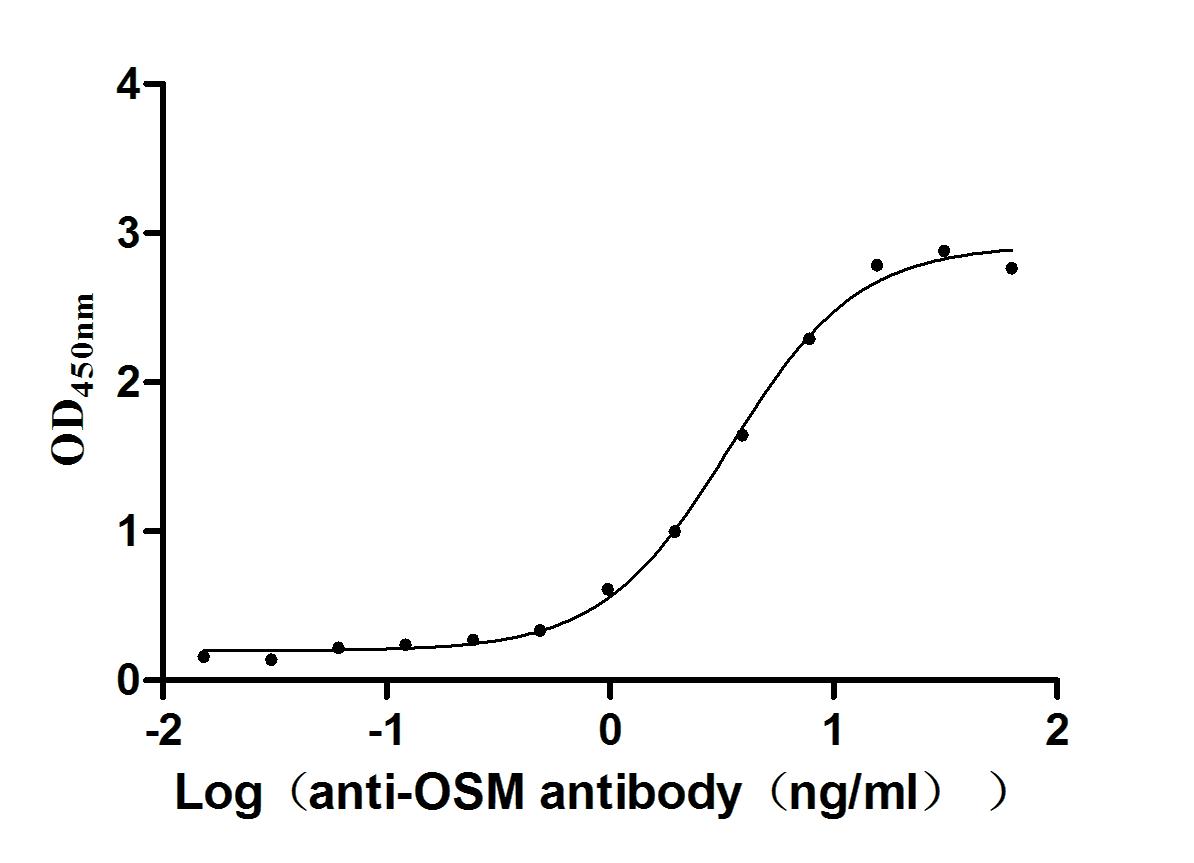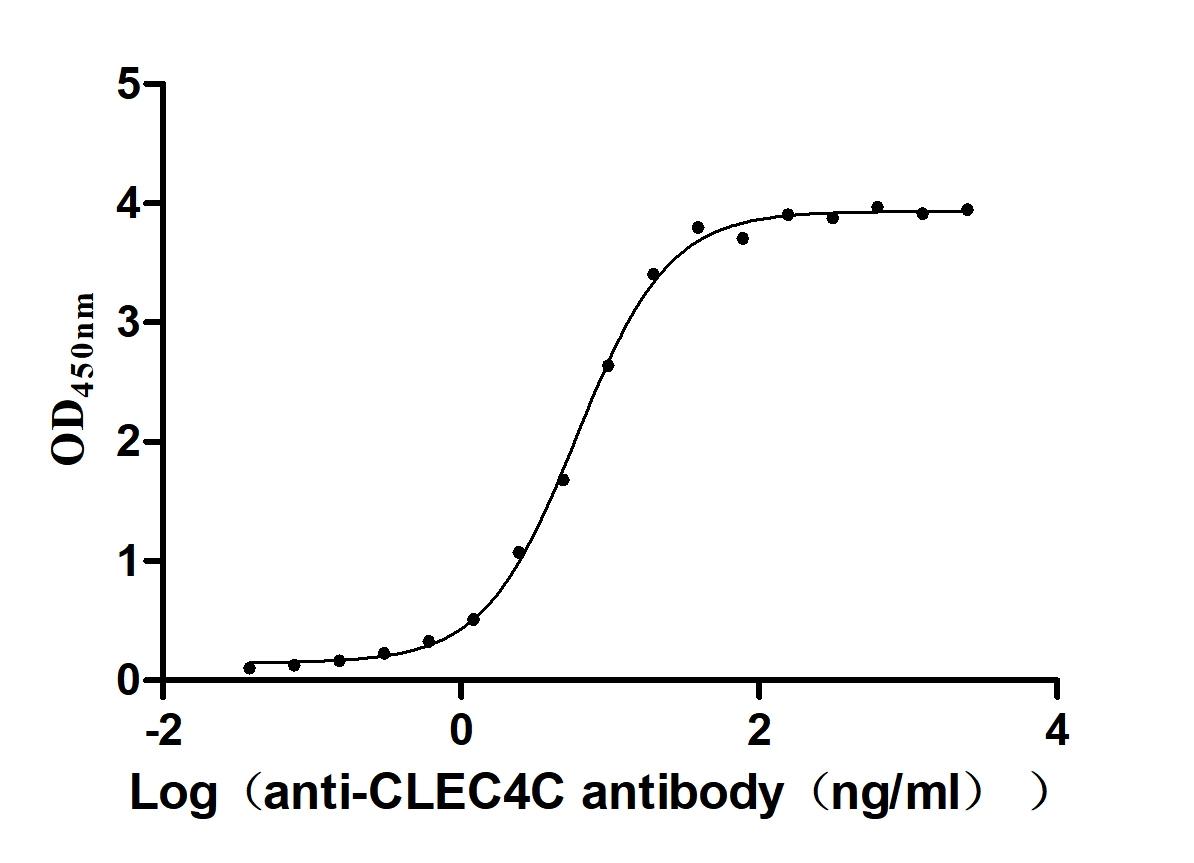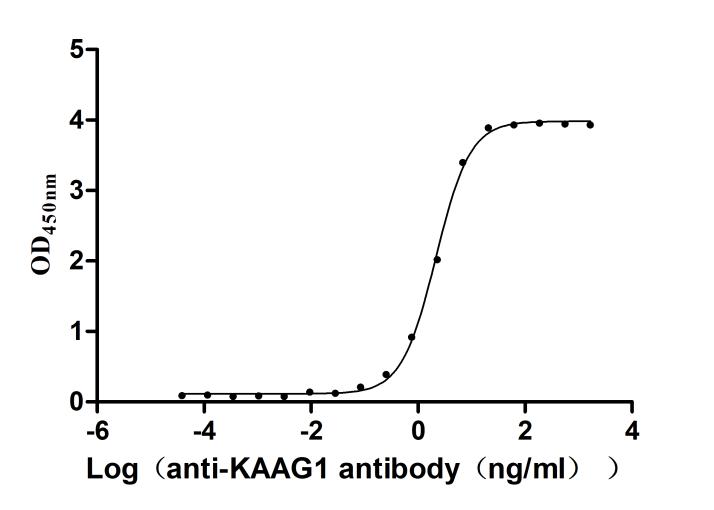Recombinant Human NKG2D ligand 1 (ULBP1)
-
中文名稱:人ULBP1重組蛋白
-
貨號(hào):CSB-YP887177HU
-
規(guī)格:
-
來(lái)源:Yeast
-
其他:
-
中文名稱:人ULBP1重組蛋白
-
貨號(hào):CSB-EP887177HU
-
規(guī)格:
-
來(lái)源:E.coli
-
其他:
-
中文名稱:人ULBP1重組蛋白
-
貨號(hào):CSB-EP887177HU-B
-
規(guī)格:
-
來(lái)源:E.coli
-
共軛:Avi-tag Biotinylated
E. coli biotin ligase (BirA) is highly specific in covalently attaching biotin to the 15 amino acid AviTag peptide. This recombinant protein was biotinylated in vivo by AviTag-BirA technology, which method is BriA catalyzes amide linkage between the biotin and the specific lysine of the AviTag.
-
其他:
-
中文名稱:人ULBP1重組蛋白
-
貨號(hào):CSB-BP887177HU
-
規(guī)格:
-
來(lái)源:Baculovirus
-
其他:
產(chǎn)品詳情
-
純度:>85% (SDS-PAGE)
-
基因名:
-
Uniprot No.:
-
別名:Alcan beta; ALCAN-beta; N2DL-1; N2DL1; N2DL1_HUMAN; NKG2D ligand 1; NKG2D ligand 1 precursor; NKG2DL1; RAET1I; Retinoic acid early transcript 1I; UL16; UL16 binding protein 1; UL16-binding protein 1; ULBP1
-
種屬:Homo sapiens (Human)
-
蛋白長(zhǎng)度:Full Length of Mature Protein
-
表達(dá)區(qū)域:26-216
-
氨基酸序列GWVDT HCLCYDFIIT PKSRPEPQWC EVQGLVDERP FLHYDCVNHK AKAFASLGKK VNVTKTWEEQ TETLRDVVDF LKGQLLDIQV ENLIPIEPLT LQARMSCEHE AHGHGRGSWQ FLFNGQKFLL FDSNNRKWTA LHPGAKKMTE KWEKNRDVTM FFQKISLGDC KMWLEEFLMY WEQMLDPTKP PSLAPG
-
蛋白標(biāo)簽:Tag?type?will?be?determined?during?the?manufacturing?process.
The tag type will be determined during production process. If you have specified tag type, please tell us and we will develop the specified tag preferentially. -
產(chǎn)品提供形式:Lyophilized powder
Note: We will preferentially ship the format that we have in stock, however, if you have any special requirement for the format, please remark your requirement when placing the order, we will prepare according to your demand. -
復(fù)溶:We recommend that this vial be briefly centrifuged prior to opening to bring the contents to the bottom. Please reconstitute protein in deionized sterile water to a concentration of 0.1-1.0 mg/mL.We recommend to add 5-50% of glycerol (final concentration) and aliquot for long-term storage at -20℃/-80℃. Our default final concentration of glycerol is 50%. Customers could use it as reference.
-
儲(chǔ)存條件:Store at -20°C/-80°C upon receipt, aliquoting is necessary for mutiple use. Avoid repeated freeze-thaw cycles.
-
保質(zhì)期:The shelf life is related to many factors, storage state, buffer ingredients, storage temperature and the stability of the protein itself.
Generally, the shelf life of liquid form is 6 months at -20°C/-80°C. The shelf life of lyophilized form is 12 months at -20°C/-80°C. -
貨期:Delivery time may differ from different purchasing way or location, please kindly consult your local distributors for specific delivery time.Note: All of our proteins are default shipped with normal blue ice packs, if you request to ship with dry ice, please communicate with us in advance and extra fees will be charged.
-
注意事項(xiàng):Repeated freezing and thawing is not recommended. Store working aliquots at 4°C for up to one week.
-
Datasheet :Please contact us to get it.
相關(guān)產(chǎn)品
靶點(diǎn)詳情
-
功能:Binds and activates the KLRK1/NKG2D receptor, mediating natural killer cell cytotoxicity.
-
基因功能參考文獻(xiàn):
- we show that Simian Virus 40 (SV40)...evades NK cell attack through the down regulation of...ULBP1 PMID: 26992229
- ATF4 drives ULBP1 gene expression in cancer cell lines, while the RNA-binding protein RBM4 supports ULBP1 expression by suppressing a novel alternatively spliced isoform of ULBP1 mRNA. PMID: 26565589
- expression determines intrinsic acute myeloid leukemia susceptibility to allogeneic V[gamma]9V[delta]2 T cells PMID: 24911793
- recurrence-free survival of patients with ULBP1-negative hepatocellular carcinoma (HCC) was significantly shorter than that of patients with ULBP1-positive HCC PMID: 21756848
- recombinant ULBP1 fused to CD45 caused a reduction in cytotoxicity and degranulation by NK cells, implying a role for receptor ligand distribution in the activation of NK cell responses PMID: 21464092
- Data show that ULBP1, TFR2 and IFITM1 were associated with increased susceptibility to Vgamma9Vdelta2 T-cell cytotoxicity. PMID: 20220060
- These results identify Mult1 as a target for the MARCH family of E3 ligases PMID: 20870941
- As NKG2D ligand, ULBP1 are expressed on immature dendritic cells and plays an important role in the cytotoxic effect of NK cells against iDC. PMID: 18394338
- Data show that the protease NS3/4A of HCV down-regulates ULBP1 expression by inhibiting the transcription of ULBP1. PMID: 19500498
- ULBP1 binds to the NKG2D receptor and activates multiple signaling pathways in primary natural killer cells. PMID: 11777960
- The NKG2D ligand ULBP1 is up-regulated and readily detectable intracellularly in the endoplasmic reticulum of human cytomegalovirus-infected fibroblasts, where it colocalizes with viral protein UL16. PMID: 12847260
- ULBP1 is a human ligand of the NKG2D receptor PMID: 16901903
- The selective induction of ULBP1 expression by proteasome inhibitor drugs, along with variable NKG2D ligand expression by human tumor cells, indicates that NKG2D ligand genes are independently regulated. PMID: 19414815
顯示更多
收起更多
-
亞細(xì)胞定位:Cell membrane; Lipid-anchor, GPI-anchor. Endoplasmic reticulum.
-
蛋白家族:MHC class I family
-
組織特異性:Expressed in T-cells, B-cells, erythroleukemia cell lines and in a wide range of tissues including heart, brain, lung, liver, testis, lymph node, thymus, tonsil and bone marrow. Also found in fetal heart, brain, lung and liver.
-
數(shù)據(jù)庫(kù)鏈接:
Most popular with customers
-
Recombinant Human Angiopoietin-2 (ANGPT2) (Active)
Express system: Mammalian cell
Species: Homo sapiens (Human)
-
Recombinant Human Oncostatin-M (OSM), partial (Active)
Express system: Mammalian cell
Species: Homo sapiens (Human)
-
Recombinant Macaca fascicularis C-type lectin domain family 4 member C(CLEC4C), partial (Active)
Express system: Mammalian cell
Species: Macaca fascicularis (Crab-eating macaque) (Cynomolgus monkey)
-
Recombinant Human Kidney-associated antigen 1 (KAAG1) (Active)
Express system: E.coli
Species: Homo sapiens (Human)
-
Express system: Mammalian cell
Species: Macaca mulatta (Rhesus macaque)
-
Recombinant Human Tumor necrosis factor ligand superfamily member 15(TNFSF15) (Active)
Express system: Mammalian cell
Species: Homo sapiens (Human)


-AC1.jpg)




-AC1.jpg)









